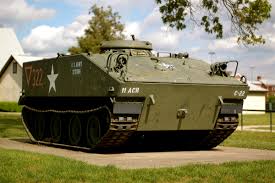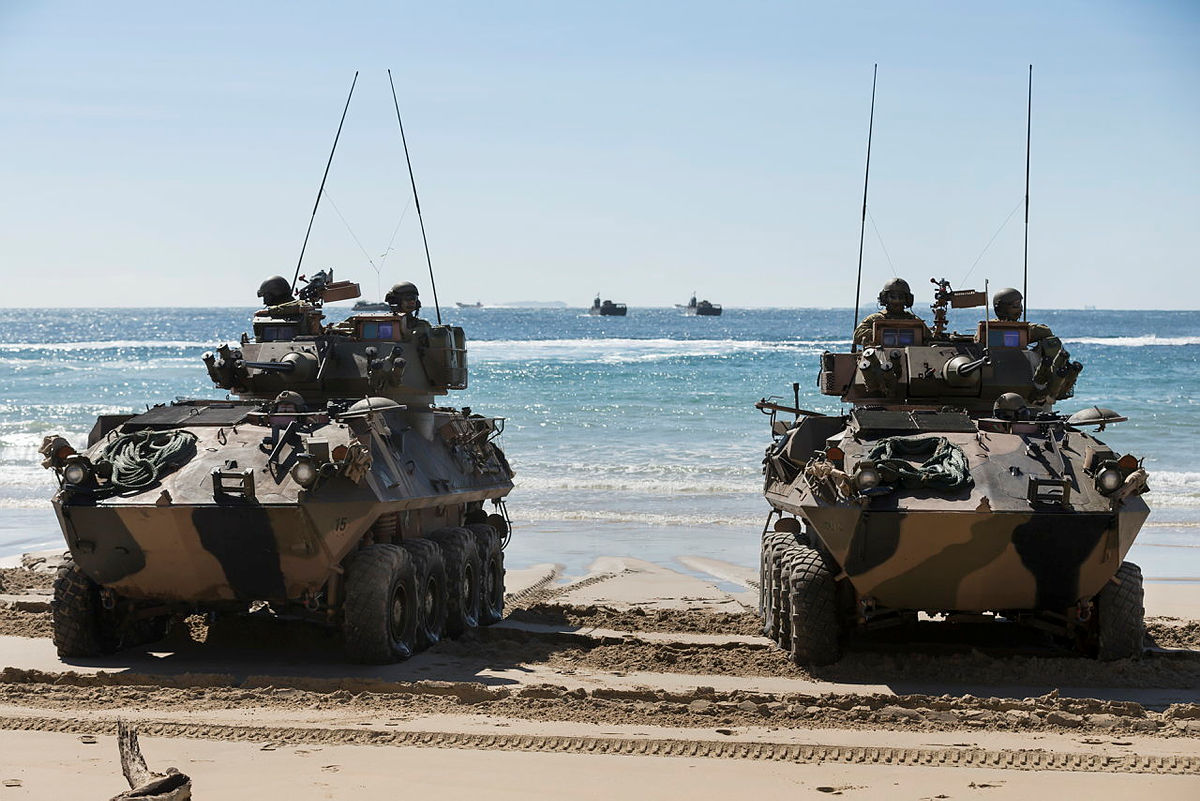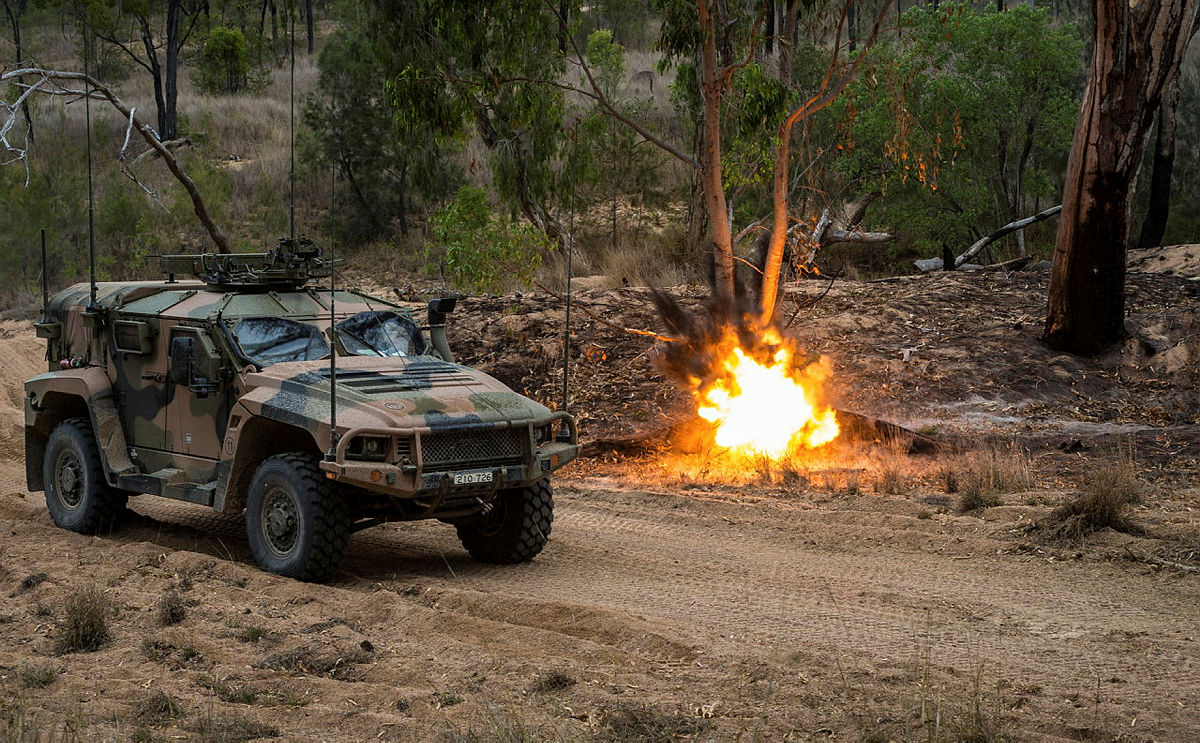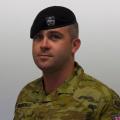'Reconnaissance in a Bradley is like doing reconnaissance in a Winnebago.'[1]
– Major-General Thomas H Tait, Commander General, US Army Armor Center
Introduction
As we move into the 2020s, the face of the Royal Australian Armoured Corps (RAAC), and indeed mounted-manoeuvre as a whole, is changing. The implementation of Plan BEERSHEBA, the force modernisation of Army, has brought about significant transformation to the vehicles in which we conduct our business. This is true too of tactics; but to what extent are our standard operating procedures (SOPs) and Tactics, Techniques, and Procedures (TTPs) evolving to suit contemporary and future operations? A restructure of vehicle type should always be paired with a reform of their tactical employment. It would not be surprising to any cavalry commander that employing tanks with the combat reconnaissance vehicle (CRV) tactics, CRV with armoured personnel carrier (APC) tactics or protected mobility vehicle (PMV) with infantry tactics cannot, and will not work to the full efficiency of the platform. It is for this reason that substantial change must be implemented to the training, doctrine and organisational design of mounted-manoeuvre, particularly in that of the new CRV.
Historical employment of cavalry reconnaissance
Traditionally, reconnaissance organisations, doctrine and training have tendered to favour either an aggressive approach that accepted the need to fight for information, or a passive stance that emphasised stealth, combat avoidance and undetected observation.[2] Commanders require the versatility to adapt their operations to enable their force to achieve both. The ability to rapidly change focus gives commanders flexibility and more alternative actions in uncertain situations.
US Army mounted reconnaissance during World War II relied heavily on stealth and undetected observation and, when successful, greatly influenced the parent-unit’s actions. Jeep-mounted scouts; however, lacked sufficient firepower and protection. Wehrmacht counter-reconnaissance consistently destroyed US forward elements, or forced them to withdraw, thus spoiling the reconnaissance effort. Reconnaissance elements must be able to survive an encounter with the enemy, otherwise information gathering ends on initial contact, and the higher commander’s situational development cannot be advanced. During both Operations Desert Storm and Iraqi Freedom, very similar survivability issues arose with the employment of Humvee-borne units. Commanders in both conflicts often sidelined their light Reconnaissance, Surveillance and Target Acquisition (RSTA) units to minimise losses and prevent their destruction through enemy action.
In both examples noted above, American reconnaissance lacked the necessary capabilities required to complete their mission. Both were unable to fight for information, neutralise resistance or block enemy efforts in a counter-recon battle. A light, under-protected, firepower diminished vehicle, as shown throughout the history of armoured manoeuvre, simply cannot complete essential cavalry tasks. A three-dimensional, thinking, breathing enemy understands the importance of reconnaissance and information superiority, making cavalry a high pay-off target. It is a necessity that cavalry platforms provide enough ballistic protection and firepower in order to survive contact and operate within close proximity to the enemy. Without this protection, through both armour and armament, it is expected that the reconnaissance element will become the fatal victim in any confrontation with the enemy.

If a light, less detectable vehicle with minimalistic firepower is not the answer, then perhaps a heavier armed and armoured vehicle is. The US Army went through a number of mounted-reconnaissance vehicle changes throughout the latter half of the 20th century. In the 1960s, the purpose-built M114 armoured recon vehicle was developed to complement the M113s lift capability. The platform was a failure, primarily due to its vulnerability to mines[3] and was subsequently withdrawn from operational service in Vietnam in 1964. Since then, the US Army has used a variety of platforms for reconnaissance, although not designed for the role, such as M113, Humvee, Bradley, Stryker and to some extent the Mine-Resistant Ambush-Protected vehicle (MRAP).
From the M114A2 fitted with M139 20mm gun, to the light armoured Vehicle (LAV) and Bradley with M242 25mm chain gun, the emphasis has been on firepower. Anti-armour capability and survivability on a mechanised battlefield has improved the reconnaissance platform’s firepower, but at the cost of their information gathering capacity. There is a theory that having an array of weapons capable of destroying heavy, hardened targets, encourages contact at the expense of information collection. Size, combat laden weight and noise signature diminishes the ability to stay undetected, thus boding the question of their effectiveness. Are they truly reconnaissance organisations or mechanised fighting units by an altered name?
In the 1980s, the US Army trialled a ‘2x2’ configuration, with two tank platoons and two scout platoons within a single troop (Squadron size in ADF terms). These ‘pure’ platoons simplified training, command, supply and maintenance, while the troop possessed a variety of task-organisation options.[4] It would be the basis of the configuration that formed E Troop, 2nd Squadron, 2nd Armored Cavalry Regiment during the Battle of the 73 Easting on 26 February 1991. 2ACR’s primary task during the advance was to identify and attrit security elements so that follow-on forces could move up for a deliberate attack.
E Troop, commanded by CAPT HR McMaster, contacted a significant enemy unit comprised of T72 MBTs and BMPs. Through overwhelming firepower and weapons overmatch, the Iraqi forces were decimated in what would be later called ‘the last great tank battle of the 20th century’. This contact, and the follow-up by 3rd Armored Division, constitutes ‘recon pull’, orienting the advancing coalition forces onto the Iraqi Tawakalna Division. In the bigger picture, this is not entirely a ‘recon operation’ by Australian standards, considering that 2ACR‘s orbat is bigger than the entirety of the RAAC. However, what it does prove is that the integration of different platforms achieves flexibility across a broader spectrum of operational necessity. Offensive, defensive, reconnaissance and security operations all require an organisation that has economy-of-force with proven utility to achieve a broad spectrum of activities.
Australia's new reconnaissance capability

When time came for the acquisition of a new CRV, the two most key considerations were firepower and survivability; but at what cost? The Rheinmetall Boxer CRV is 3.24m tall, and weighs over 38t combat laden. The concealment of the Australian light armoured vehicle (ASLAV) is a tried and tested technique, proved time and time again in force-on-force exercises. During Ex HAMEL 16, a patrol of ASLAVs remained undetected fifty metres from a track that was traversed by two troops worth of vehicles from the opposing force; and likewise an entire squadron managed to remain below the detection threshold for twelve days, while being actively searched for by two squadrons from 1 Armoured Regiment.
Given the increased size of the Boxer CRV, is this level of camouflage and concealment achievable? Similarly, will the weight of the new platform allow it to perform in the same manner in low-lying wetlands and creek lines as an AS4 (M113) or ASLAV? It would be an understatement to say that every single member of the RAAC has seen a vehicle get bogged, or a creek bed give way resulting in a vehicle rollover. Those who haven’t would surely be the envy of the corps. The Boxer has a disadvantage afforded by both its size and weight, effecting its mobility options and its concealment.
If this hypothesis is correct, then we need to revise the manner in which the new CRV is employed. With some terrain now untenable, we first need to adapt what is seen to be an appropriate manoeuvre corridor. Ground appreciation by commanders at all levels is more applicable than ever, not just for individual vehicle craft (IVC), but also our predictability to an adversary. On the sheer fact of terrain accessibility, the enemy already has an upper hand by assessing where we are likely to move, and where they are able to bypass, infiltrate, envelope and indeed penetrate.
The noise and dust signature provided by the larger platform will make lead elements easier to locate, and therefore engaged with direct and indirect fires. Although possessing heavier armour and superior firepower than ASLAV, the vehicle is far more vulnerable when moving, simply due to the amount of sensors that can detect the large signature. This is true also of electronic signature propagated by voice and data communications. During World War II, a German reconnaissance company commander wrote a paper which is now a training circular issued by the German Armed Forces, containing thirty basic lessons of armoured combat. Lesson five reads, 'Iron radio discipline is a prerequisite of good leadership, particularly when your only method of command is radio. In the point company for instance, the trail platoons should not use the radio at all except in emergency, leaving the net clear for the point platoon leader.'[5] Not only does this eliminate unnecessary chatter, but also, in the contemporary battlefield, ensures a smaller electronic signature.
Digital communication is a double edged sword in modern warfare, with it both providing situational awareness to friendly combatants, but also presenting a bigger electronic picture to enemy EW. Technology that fully integrates bluefor and redfor locations, orders, target acquisition and fires from offensive support has the potential for over-reliance at the expense of the human factor. Data communications is not the silver bullet that achieves success in manoeuvre warfare. This lesson became clear during Israel’s war against Hezbollah during the Second Lebanon War in 2006. Armed forces of highly technological countries often demonstrate the naive belief that their technological edge would enable them to cope effectively with irregular challenges at relatively low cost. They tend to put their faith in airborne weapon systems, pointing out their qualitative and operational advantage, particularly their superior firepower, higher manoeuvrability and greater flexibility in comparison with ground counter-insurgency [sic] forces.[6] This over-reliance on technology extends much further than digital communications. The Boxer CRV has a suite of digital sighting systems, and although has a backup battery, does not have physical glass optics as a redundancy. In the event of electronic or software failure, the Boxer becomes a 38t steel box that cannot move, shoot or communicate.
The few shortcomings of the new CRV are balanced however, by its survivability from both direct fire and mine attack, and its firepower that is capable of penetrating 60mm of RHA (60° obliquity) at 1000m.[7] But this alone cannot win the reconnaissance battle. With the problems now outlined, it is time to move forward with potential solutions.
Plan KEOGH has forced us to implement a four-vehicle troop structure, which although foreign to our doctrine, is not unworkable. Many armed forces around the world operate with this structure, and it has its merits. The main drawback is the ability to split down to patrol level. Many of our existing tactics involve split patrol manoeuvre, operating a considerable distance from one another – a split axis clearance would be one example. This relies heavily on the patrol having a third vehicle, for extra security and redundancy in the event of a misfired gun or a minor breakdown. With a four-vehicle troop, however, the capacity to achieve this is minimal. M1A1 Abrams tanks in the Australian Army, although they have the ability, rarely split down to patrols (sections). Perhaps the answer to this conundrum could be drawn from rule nineteen of the German basic lessons of armour combat: 'Never split your combat power; that is to say, do not employ parts of the company in such a manner that they cannot support each other. When your attack has two objectives you should attack first one and then the other with all weapons. In this way you will more certainly end up with both objectives in hand and fewer casualties.' Patrols, in a four-vehicle troop, should stay within a tactical bound of each other, affording mutual support, but far enough apart to achieve its objective.

Options for stealth
In areas of unfavourable terrain, which for the Boxer CRV could be bountiful, the employment of dismounted reconnaissance would greatly benefit the team. At times, the use of mounted-manoeuvre in isolation will not achieve the commander’s intent, and will similarly be of detriment to the safety of the troop, through either detection or attrition. Dismounted soldiers have gone under many names in cavalry, such as recon scouts, cavalry scouts, assault troopers, long range reconnaissance patrols, and many more of a derogatory nature. The 'death before dismount' mentality that has wormed its way into common thought should at all levels be quashed. In an ASLAV equipped, six-vehicle troop, the dismounting of gunners and operators can effectively spawn an organic scout section. The dual-use of personnel; however, comes at a cost to rest-rotation, overall effectiveness and job competence. Indeed, the Boxer CRV may not lend itself to the disaggregation of vehicle crews, and the turret may not be able to be operated by the crew commander alone with the same effectiveness. For these reasons, an organic, yet separately manned recon scout section should complement each troop. Some of the essential tasks performed by recon scouts are the safe traversing of defiles and verges, observation posts, close and point target recon, battlefield clearance, battle damage assessments and anti-armour ambushing. Without this asset, these tasks would be near impossible, thus impacting the effectiveness of the troop. Although officially removed from the cavalry orbat in 2010, the necessity for recon scouts never left, and have always, in some way, shape or form been an integral part of the troop.
Even with a compliment of recon scouts, this does not solve the problem of mounted-reconnaissance in its entirety. Travelling at ‘high’ speed, the recon scouts are largely ineffective, and their employment will slow a troop’s tempo. Manoeuvring four, large, loud, signature producing vehicles into predicable mobility corridors still poses a significant risk. Reducing vehicle speed and deploying scouts are options, but not always the best. The troop leader needs another option at their disposal, sans requesting UAS support at every tactical bound. The potential solution to the problem may be lying closer than we think. Our previous near-peer adversary, the Musorian Armed Forces (MAF), much like the Wehrmacht of World War II, utilise motorcycles as a means of forward eyes and ears for their brigade reconnaissance. But much like the jeep-mounted US Army, are only successful when they remain undetected. They are extremely vulnerable to attack, and in the scheme of mounted combat, have no firepower. Although used in the past (most notably by 2 Cav Regt), motorcycles may not fit the mould of what is required in the future battlespace. Scouts [sic] need a platform with armour and armament to ensure initial contact survival, enable destruction of resistance when necessary and permit mission execution in the enemy’s presence.[8] A cavalry troop requires a vehicle that is small enough to remain undetected, but if needed, is able to have enough protection and firepower to survive contact. What we require is a vehicle that can work in conjunction with the Boxer CRV, and has the mobility to act as forward eyes and ears for the troop.

The Hawkei Protected Mobility Vehicle, although still with some teething issues, may have the potential to be an asset that can be implemented at troop level. It is sufficiently armoured enough to sustain some direct fire attack, has mine protection, and if fitted with the appropriate weapon system, can have the firepower to survive initial contact with the enemy. The Kongsberg Remote Weapon Station (RWS), which is currently in service, has the ability to be fitted with the 12.7mm M2HB QCB machine gun, or the Mk 19 Automatic Grenade Launcher, and boasts an effective range of 2000m; a suitable amount of firepower for a fleeting contact. Supacat has recently been introduced into Special Operations, in which they are using a CRV as an assault vehicle. Both Hawkei and Supacat could prove to be a useful asset to the cavalry troop leader, if employed correctly.
Conclusion
The configuration of armoured troops under the current proposal reveals weaknesses that stem from reduced mobility, increased detectability and reduced flexibility of employment; however, doctrinal changes and a new configuration of existing assets could largely ameliorate this situation. The Hawkei/Supacat and recon scouts, used in conjunction with the Boxer CRV, have the potential to give the cavalry troop leader an array of options, with a mix of capabilities and the ability to perform a wider range of activities. Operation Desert Storm witnessed the use of modified reconnaissance platoons to offset the prior removal of tanks from the division cavalry squadron. Similarly, survivability concerns led to alteration of Humvee scout platoons in Operation Iraqi Freedom, to include an M3/Humvee mix.[9] The mixing of vehicle platforms, if implemented, must be a permanent change. Training and doctrine must be inclusive of all parties, springing from the seed of one unit. Aggregation of separate units enhances one organisation at the detriment of the other. Mounted-manoeuvre reconnaissance units, at all levels, in the contemporary time and future, must reflect their employment at conventional warfare, counter-insurgency and stability operations.
Warfare is changing, but the fundamentals will always be the same. We can only but look into our past to prepare for our future. The only way is forward.










With respect to the Boxer, what we don’t know is the tactical scenario and terrain characteristics which set the design priorities for its required characteristics. If it suffers a software failure, what will this mean? The same question must be asked of all military platforms entering service. As you suggest, however, this can’t be taken for granted.
I’ve been advocating recently in terms of the lead time needed to develop tactical skills. There are some commentators who suggest that ‘lead times’ are solely those related to the acquisition of equipment.
The culture that existed during the Vietnam War resulted in a subservience which accepted (and not raise issues with) everything that was ‘decreed’.
RAAC ARES units have almost been written out of operational significance. The Hawkei would be a great platform on which to enable reconnaissance skills to be developed (and transferred to the Armoured Cavalry Regiments as tactical scenarios might require).
Finally … I’m aware of ‘Death Before Dishonour’ in relation to the RAAC red over gold tac sign, but ‘Death Before Dismount’ is something I’d have to think about (having had to dismount under fire). Hopefully organisations such as the RAAC Corporation will support a wide debate into issues such as you’ve raised.